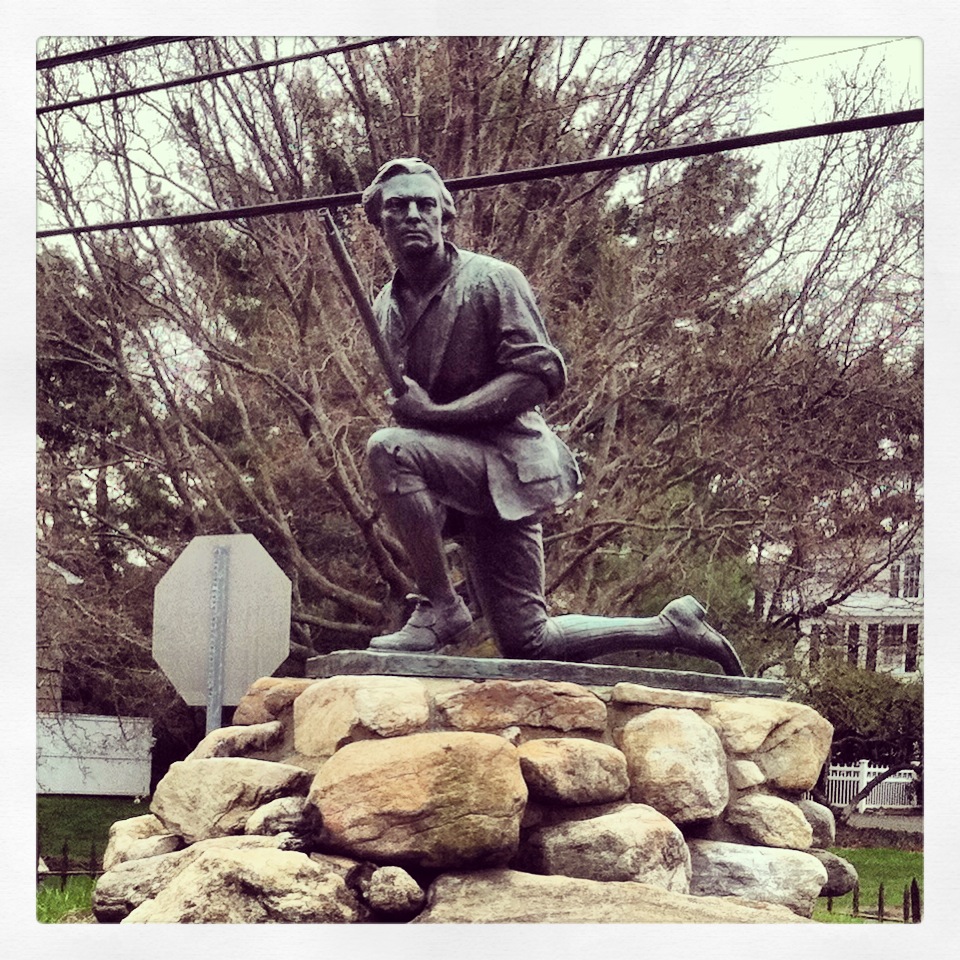
At Compo Beach on the afternoon of April 25, 1777, Mercy Disbrow was boiling seawater in a cauldron to make salt as her baby napped. Sandpipers strolled the shoreline in search of snacks, and gulls swooped down to pull treats from the ocean. In a meadow beyond the beach, Thomas Nash’s 100 or so sheep noshed on spring grass.
This idyllic scene, described in Woody Klein’s “Westport, Connecticut: The Story of a New England Town’s Rise to Prominence,” was not fated to last.
A fleet of 26 British vessels carrying over 1,800 soldiers had amassed at Compo’s shores and was preparing to land, their objective to march to and raid Danbury, where Revolutionary soldiers stored ammunition and supplies. With British Major General William Tryon leading them and loyalists guiding them, British troops landed at Compo Beach at Cedar Point Road and advanced inland via Compo Road.
About two miles from the shoreline, a group of armed, local militia had gathered at the corner of Post and Compo Roads to meet the British troops. The opposing sides exchanged fire, and the Patriots (or, if you prefer, rebels) killed a British major and injured three soldiers. But the British troops continued their advance, encamping overnight in northern Fairfield.
The next morning, they continued to Redding, where they stopped for a rest before proceeding through Bethel, finally arriving in Danbury on the afternoon of April 26. In Dabury, the British burned 19 homes and 22 stores and barns housing colonial supplies that included ammunition, food, clothing, medical equipment, tents, tools, and a printing press. The soldiers also reportedly partook of drink and wreaked general havoc.
Hearing American militia were headed their way, the British troops left Danbury passing through Ridgefield on the morning of April 27 to return to their ships. In Ridgefield, they encountered stiff opposition from hundreds of local militia, led by then-colonial officer Benedict Arnold. A battle raged down Ridgefield’s Main Street, with Arnold’s troops following the British as they retreated toward Compo Beach and their awaiting ships.
Benedict Arnold was on the Redcoats’ tails, having followed them from Ridgefield, and attempted to lead a charge across the Kings Highway Bridge, but the 200 militiamen he was leading decided they didn’t like their odds and declined to participate. Arnold would later complain in his official report, “The Militia, as usual, I wish never to see another of them in action.”* Two years later, he would turn his allegiance to the British.
But on this day, Arnold maintained his loyalty to the colonials and proceeded to Compo Hill where their troops, with John Lamb leading, were engaged in a fierce battle with the retreating British. Having run out of ammunition and fearing they would be overtaken, the British “ordered a shoulder-to-shoulder charge with fixed bayonets,”* so demoralizing the militiamen that they offered no further resistance.
Though the British soldiers achieved their objective and were able to return to their ships and escape, our colonial predecessors were a tough breed. Of the roughly 1,800 troops, 300 were killed, and the British later said they encountered more severe resistance here than they did at Lexington and Concord.
*Quoted in Chapter 6 of Woody Klein’s “Westport, Connecticut: The Story of a New England Town’s Rise to Prominence” (Greenwood Press, 2000), where I learned the details of the battles described in this article.